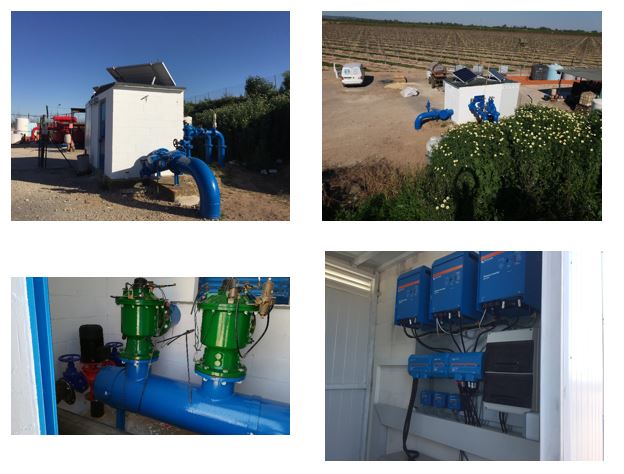In pressurized irrigation water distribution networks, it is necessary to guarantee a certain flow and a minimum pressure to all hydrants. In practice, this implies that the regulation of the manometric height in the pumps is made according to the most unfavorable hydrants, causing excess pressure in the rest. For this reason, the installation of pressure regulating valves is necessary to protect hydraulic infrastructures and irrigation systems from the overpressures existing in a large part of the network.
In addition, it is common for these types of networks to be organized on demand, which means that water is continuously available for irrigation. This means that farmers can open and close their hydrants according to their needs, which makes circulating flows in the network highly variable and difficult to predict. On the other hand, given the seasonal nature of irrigation, while in some months the demands for water are very high in others they are practically nil.
The use of excess pressure in water distribution networks for the production of electrical energy has given rise to many studies and proposals for solutions. These proposals are based on the incorporation of turbines that usually replace pressure regulating valves and take advantage of flow and pressure conditions to produce electricity. Given the current situation of irrigation, in which energy dependence is very high and the electricity consumed in pumping represents on average 40% of water costs, any initiative aimed at reducing energy demand is of the utmost interest. Hydropower recovery could lead to various environmental and economic benefits such as reduced costs associated with food production and greenhouse gas emissions.
However, conventional turbines have the drawback of their high cost, especially for small powers (within the range of microhydraulic power 5 to 100 kW, common in this type of network), which makes the installation and amortization of the equipment difficult.
An alternative for this use is the use of pumps operating as turbines or PATs (Pump as Turbines), which consist of hydraulic pumps operating in the opposite way to the conventional one. The great advantage of PATs as a profitable technology for micro-hydraulic solutions lies in their low cost. PATs offer high performance under conditions of maximum efficiency (flow and pressure), but their performance drops markedly when flow rates vary from optimum. This contrasts with the usual situations in irrigation water distribution networks in which fluctuations in circulating flows are frequent. For this reason, the working conditions of the PATs must be regulated to ensure that they always work at points of maximum efficiency.
To regulate working conditions, in recent years various studies have been carried out that basically propose two types of regulation: electrical and hydraulic. Hydraulic regulation uses a by-pass scheme, thanks to which part of the flow is derived in the pipeline and the inlet conditions to the PAT are regulated by means of control valves. The PAT would work in parallel to a pressure reducing valve, which is in charge of regulating the outlet pressure of the by-pass. This scheme is very suitable for networks where there are previously installed reducing valves. On the contrary, by means of electrical regulation, the rotation speed of the generator is regulated, adapting at all times to the existing conditions in the network.
Therefore, the installation of a PAT would allow two objectives to be achieved: on the one hand, excess pressure in the network would be reduced and, on the other, electricity is generated that can be used to power various devices (sensors, control systems, fuel injectors). fertilizer, etc.) and even, if possible, pour into the electricity grid and obtain an economic benefit from the sale of energy.
At Powerturbines, we are pioneers in the use of this technology and we are delighted to help you. To do this, please write us an email to the address info@powerturbines.eu and we will respond to you as soon as possible.

